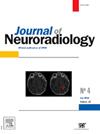动脉内化疗灌注作为有症状的原发性脑恶性肿瘤姑息性治疗的疗效和安全性。
IF 3.3
3区 医学
Q2 CLINICAL NEUROLOGY
引用次数: 0
摘要
背景:回顾性分析动脉内化疗灌流(IAC)作为一种姑息性治疗对复发或治疗后进展性原发性恶性脑肿瘤患者的安全性、生存率和治疗反应。方法:39例患者(男24例,女15例;平均年龄:52岁),他们接受了181次IAC治疗(平均4.6次/例),并在本研究中进行了登记和评估。在39例原发性恶性脑肿瘤患者中,27例(69%)被诊断为胶质母细胞瘤。采用Kaplan-Meier法计算总生存期(OS)。根据RECIST 1.1标准确定治疗反应。结果:所有IAC治疗均未发生重大不良事件或治疗相关死亡。中位OS时间为10.3个月(95%CI: 0.6 - 19.9)。中位PFS时间为5.9个月(95%CI: 3.6 - 8.3)。部分缓解率为10.8%(4/37),病情稳定率为56.8%(21/37)。32.4%(12/37)的病例出现进展性疾病。没有完全缓解的病例。在两例病例中,由于缺少放射学随访,RECIST无法分析。结论:本研究表明,对于复发性或治疗后进展性原发性恶性脑肿瘤患者,IAC可作为一种安全的姑息策略。本文章由计算机程序翻译,如有差异,请以英文原文为准。
Efficacy and safety of intra-arterial chemoperfusion as palliative treatment of symptomatic primary brain malignancies
Background
To retrospectively analyze the safety and efficacy of intra-arterial chemoperfusion (IAC) for symptomatic patients with recurrent or post-therapeutic progressive primary malignant brain tumors in regard to safety, survival and therapy response as a palliative treatment.
Methods
Thirty-nine patients (24 men, 15 women; mean age: 52) who were treated by IAC in 181 sessions (mean: 4.6 sessions/patient) were enrolled and evaluated in this study. Out of total 39 patients with primary malignant brain tumor, 27 (69 %) were diagnosed with glioblastoma. The overall survival (OS) was calculated using the Kaplan-Meier method. Therapy response was determined according to RECIST 1.1.
Results
All IAC treatments were performed without major adverse events or treatment-related deaths. The median OS time was 10.3 months (95 %CI: 0.6 – 19.9). The median PFS time was 5.9 months (95 %CI: 3.6 – 8.3). The rate of partial response was 10.8 % (4/37) and stable disease was achieved in 56.8 % (21/37) of patients. Progressive disease was observed in 32.4 % of cases (12/37). There were no cases of complete response. In two cases RECIST could not be analyzed due to loss of radiological follow-up.
Conclusion
This study could show that IAC may serve as a safe palliative strategy for symptomatic patients with recurrent or post-therapeutic progressive primary malignant brain tumors.
求助全文
通过发布文献求助,成功后即可免费获取论文全文。
去求助
来源期刊

Journal of Neuroradiology
医学-核医学
CiteScore
6.10
自引率
5.70%
发文量
142
审稿时长
6-12 weeks
期刊介绍:
The Journal of Neuroradiology is a peer-reviewed journal, publishing worldwide clinical and basic research in the field of diagnostic and Interventional neuroradiology, translational and molecular neuroimaging, and artificial intelligence in neuroradiology.
The Journal of Neuroradiology considers for publication articles, reviews, technical notes and letters to the editors (correspondence section), provided that the methodology and scientific content are of high quality, and that the results will have substantial clinical impact and/or physiological importance.
 求助内容:
求助内容: 应助结果提醒方式:
应助结果提醒方式:


